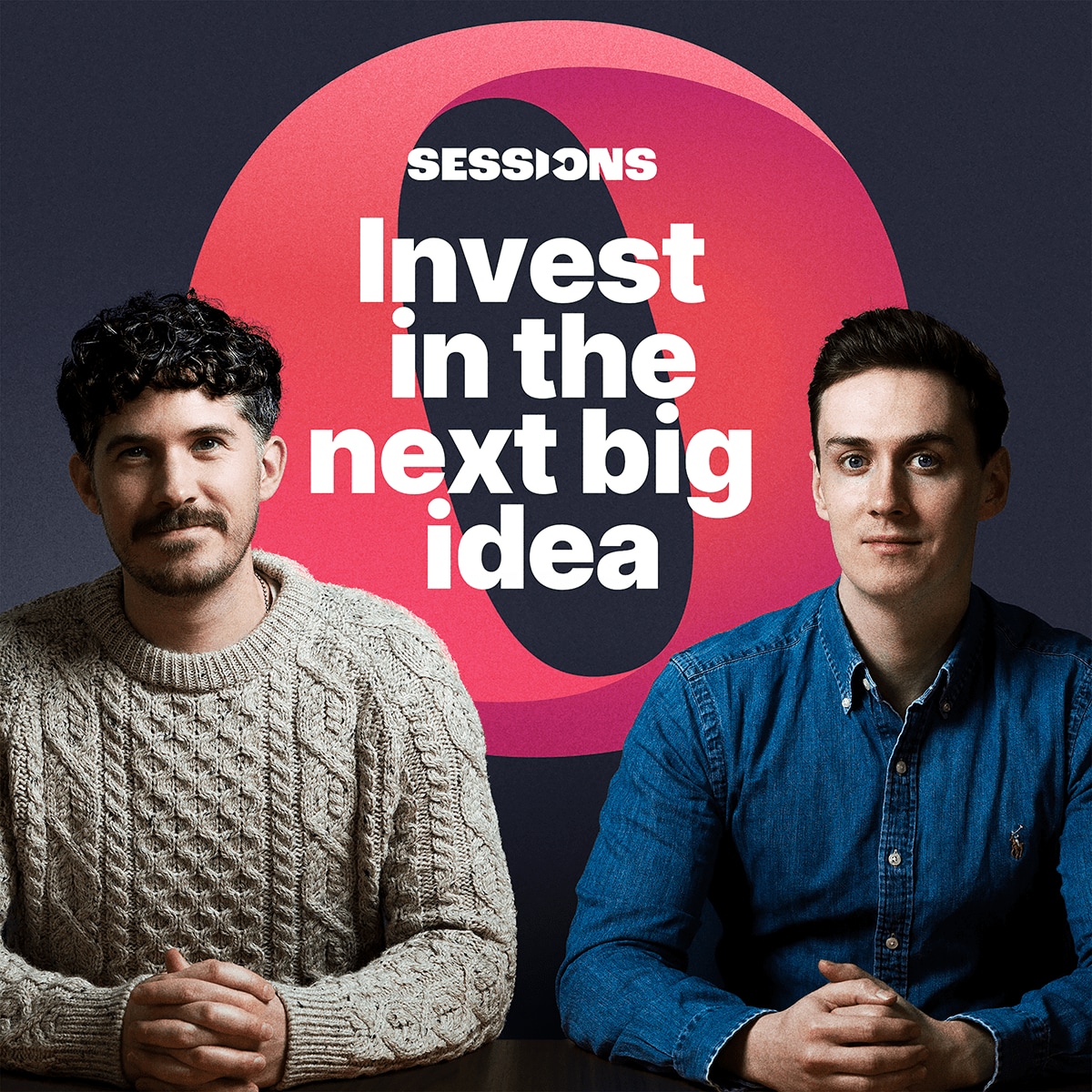Anthony Ginsberg, founder and CEO of GinsGlobal Index Funds, joins Opto Sessions this week to discuss the HAN-GINS Tech Megatrend UCITS ETF, particularly the advantages of its equal weighting, rules-based constitution and the sub-themes within the tech megatrend that he believes will converge and grow over the coming years.
LISTEN TO THE INTERVIEW:
Anthony Ginsberg is founder and CEO of GinsGlobal Index Funds, a provider of index-based ETFs including the HAN-GINS Tech Megatrend UCITS ETF [ITEK]. Before founding GinsGlobal, Ginsberg worked at Salomon Brothers (now Citibank) and Barclays.
Having worked in two major Wall Street firms, Ginsberg says his “eureka moment” came when he realised how rare it was for funds to beat their benchmarks.
“[Funds] had lots of smart people running around doing lots of crazy things,” he tells Opto Sessions. “But it was very rare to find the diamond in the rough that would actually outperform the index.”
During this time, firms like Vanguard were changing the investing landscape by channelling money from pension funds and mutual funds into benchmarks and ETFs. To this extent, Ginsberg says he views indices and ETFs as one and the same. The core of his investing philosophy revolves around index-based ETFs.
“[Funds] had lots of smart people running around doing lots of crazy things, but it was very rare to find the diamond in the rough that would actually outperform the index.”
Equal weighting
ITEK, says Ginsberg, takes the digital revolution and divides it into eight sub-themes. These sub-themes are selected by Solactive; the index tracks the performance of the Solactive Innovative Technologies Index. This is an equal-weighted index, giving broad exposure across 120 global holdings.
“Unlike the NASDAQ, which is essentially 100% US stocks, the tech megatrend actually includes about 9% Japanese stocks right now,” Ginsberg tells Opto Sessions. As of 30 April, China accounted for 17.07%, “due to the recent rebound”. US stocks account for 56.47% of the fund’s holdings.
The eight sub-themes are cloud computing, cybersecurity, digital entertainment, artificial intelligence and robotics, gene sequencing, electric vehicles (EVs), social media, and blockchain. Each have an equal weighting within the fund.
“We’re not trying to take a bet on one versus the other,” says Ginsberg. “A lot of these things are overlapping and interacting with each other. So we actually talk about the convergence of the megatrend, and for us it’s a global story rather than just an American story.”
ITEK’s composition follows a rules-based approach, minimising risk for investors. For each sub-theme, Ginsberg and his team select the 15 leaders, typically by market cap, which then populate the index. This means that the fund’s holdings are established players; 99% of them, he underlines, are profitable on an EBITDA basis.
Diversification
It isn’t just geographic diversification that Ginsberg’s equal weighting strategy achieves. With 120 stocks represented roughly equally, ITEK offers exposure to parts of the market that are typically neglected by the major indices.
“55% of the Nasdaq today is comprised of 10 stocks,” says Ginsberg, “primarily the FAANGs.” Microsoft [MSFT] and Apple [AAPL] between them comprise over 25% of the Invesco QQQ ETF [QQQ], the fund that Ginsberg alludes to as a proxy for the Nasdaq index.
For this reason, Ginsberg actively ensures that ITEK isn’t simply duplicating the contents of other indices. Its top ten holdings, as of 31 May, represent 15.72% of its total assets, reflecting this diversification.
“Obviously, clients want to play the FAANGs, but they want broader exposure,” says Ginsberg. “We're really appealing to a broader base, with clients who say ‘Look, we may already have an over concentration in the FAANGs. How about if we want to play the digital revolution in a broader sense with these other sub-themes?’”
Often, Ginsberg points out, clients will already hold assets such as the S&P 500 or the MSCI World Index that are overexposed to these stocks, and ITEK is designed to be a complementary product to these instruments.
Ginsberg is not fastidious about maintaining this equal weighting, and rebalances the fund only twice per year.
“Some people will rebalance monthly or quarterly,” he says. However, “that creates extra costs every time you rebalance.” But the main reason for only rebalancing twice yearly is to give outperformers room to run.
Ginsberg cites the example of the tear that blockchain and crypto stocks have been on this year. Applied Blockchain [APLD] is the fund’s top holding as of 31 May, with a 2.71% weighting, having gained 338.2% over the past six months. Clearly, cutting the weighting of stocks like these too often would weigh on the fund’s performance.
Assessing performance
In terms of how that performance ought to be measured, Ginsberg advises taking a medium-term approach. The technology investment landscape is inherently volatile, as has been demonstrated over the past year.
“We are looking out to a period of at least two or three to five years,” says Ginsberg.
He advises comparing the fund’s performance to the Solactive Tech Megatrend Index on which it is based, rather than indices like the Nasdaq.
“It is like apples and oranges if we compare ourselves to the Nasdaq, because when FAANGs run they may look a little bit better, but we've had a pretty good run against the Nasdaq over the last 18 months.”
Electric vehicles
Ginsberg stresses throughout the conversation that the real magic happens when sub-themes within the tech megatrend converge with one another, and this is something he expects to continue in the near future.
He cites the way that cloud technology underpins advances in online gaming and cybersecurity. When it comes to EVs, meanwhile, “what Tesla has produced is, frankly, a robot on wheels”.
EVs tap into the green revolution, and will drive much future market activity. Notwithstanding the hype around the space, Ginsberg points out how much room to run this sub-theme has.
“In the US, EVs have less than 10% market share,” he says. “You’re only going to hit that 10% number by the end of next year. At the moment it’s roughly 7.5–8%. So it's very, very early days, in terms of the build-out of EVs.”
Whatever the future holds, Ginsberg believes that the Tech Megatrends ETF is well-positioned to capture it.
For more ways to listen:
Listen to the full interview and explore our past episodes on Opto Sessions. You can also check out all our episodes via our YouTube Channel.
Disclaimer Past performance is not a reliable indicator of future results.
CMC Markets is an execution-only service provider. The material (whether or not it states any opinions) is for general information purposes only, and does not take into account your personal circumstances or objectives. Nothing in this material is (or should be considered to be) financial, investment or other advice on which reliance should be placed. No opinion given in the material constitutes a recommendation by CMC Markets or the author that any particular investment, security, transaction or investment strategy is suitable for any specific person.
The material has not been prepared in accordance with legal requirements designed to promote the independence of investment research. Although we are not specifically prevented from dealing before providing this material, we do not seek to take advantage of the material prior to its dissemination.
CMC Markets does not endorse or offer opinion on the trading strategies used by the author. Their trading strategies do not guarantee any return and CMC Markets shall not be held responsible for any loss that you may incur, either directly or indirectly, arising from any investment based on any information contained herein.
*Tax treatment depends on individual circumstances and can change or may differ in a jurisdiction other than the UK.
Continue reading for FREE
- Includes free newsletter updates, unsubscribe anytime. Privacy policy


